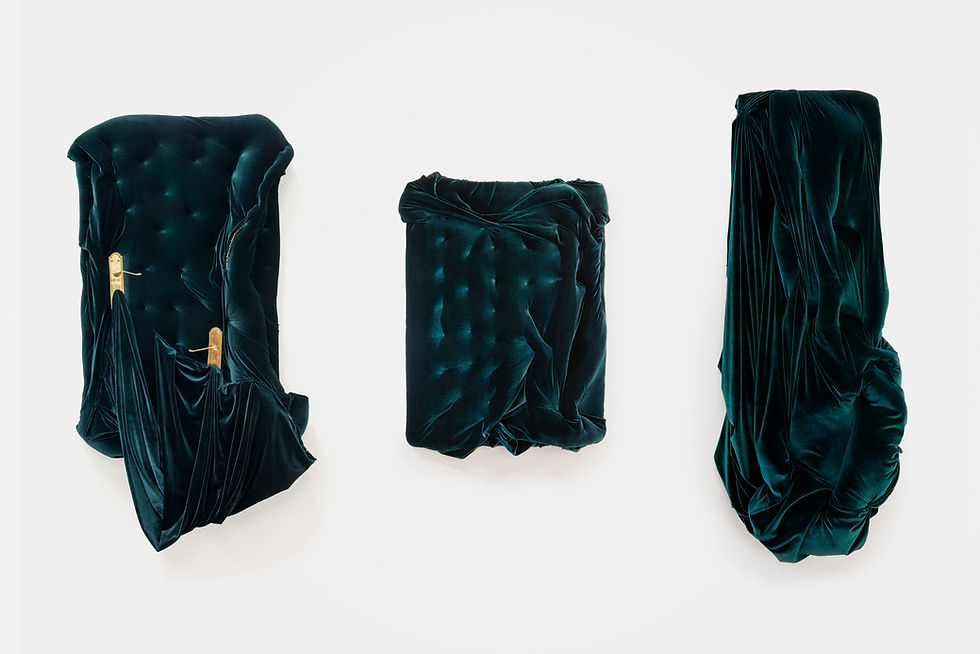The Wellspring of Zimbabwean Visual Arts Practice.
- F. Zvikomborero Mandangu
- Jan 5, 2022
- 2 min read

Moffat Takadiwa, Hashtag this flag (2020), Plastic keyboard keys, plastic bottle tops (image Courtesy of Semiose Gallery, Paris)
The subsequent staging of artHARARE took place from the 7th to the 12th of December 2021; with its domicile as limited by the nagging scourge of the COVID 19 pandemic being predominantly online. Artists were responsive to the theme based on Zimbabwean famous author Dambudzo Marechera’s statement I sing no more Roses but walk in Harare Mazes; thirty-one artists from varying disciplines exhibited, and channeling the Agent of Fortune, the late Dambudzo Marechera, the artwork presented therein constructs of a city intravenously laden with scarred stories of the past, festering in the present.
This year’s talks were derived from the aforementioned inspirational figure’s musings; “I sing no more roses but walk through Harare mazes”, providing a stem to the overall creative activities that featured on the fair’s calendar. Co- Founders Richard Mudariki and Aya Koudounaris & this edition’s curator, Mike Mavura discussed the interactive nature of the fair on the cloud and its fervent drive to place itself in the global context through this daring move.
Harare itself is the wellspring of visual art practice in Zimbabwe, spoilt for choice with artists affiliated to independent spaces such as Mbare Art Space, Post Studio Collective, Tarisai Art Studio, Artillery ZW and Village Unhu featuring on the exhibition’s programme. The power of emerging artists from these particular galleries and spaces being impactful as often, the same players frequenting the monolithic institutions of yore.

George Masarira, Ungubani (who are you), Acrylic and Charcoal on canvas, 2021
The Hararian diaspora served as an interesting confluence of artists of Bulawegian descent and practice such as Tafadzwa Gwetai, Sindiso Nyoni and George Masarira providing another perspective of the Hararian Experience, while artists based in the disapora such as Fungai Marima, Tanaka Mazivanhanga and Akudzwe Elsie Chiwa expressed nostalgic and critical insights on their association with the city.

Akudzwe Chiwa, 'Muranda Kumwe'velvet, batting, brass door handles, masonite board. 2020
artHARARE brought to the fore a city in transit, opening up to new means of engagement such as the performative; with the interaction with the art centre and the artist being taken to the people, most notably, a public that has often been segregated from the enjoyment of art. As the old City motto stated “discrimine salus”, the accessibility of art to the black citizen was limited to the white minority of the republic, at council and national level, however, in contemporaneity, such barriers and the education system are providing surety, alongside the National Development Strategy, to develop more art centres and bolster art education and appreciation towards the year 2030.

The fair concluded with the artHARARE Africa First Art Prize vernissage night at Artillery Gallery; wherein Franklyn Dzingai and Wilfred Timire became inaugural winners of the award. The commendation closed the chapter of a growing fair that leave audiences both in Harare and globally looking forward to, hopefully, a physical event that shall occupy a new niche in Southern Africa and the continent’s art ecosystem.



Comments